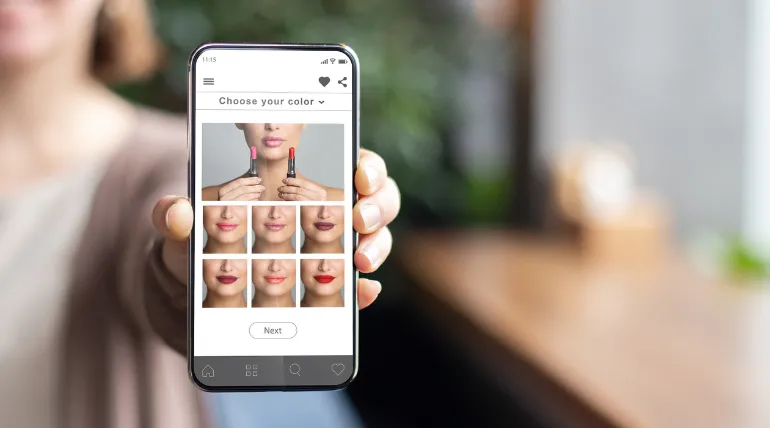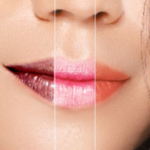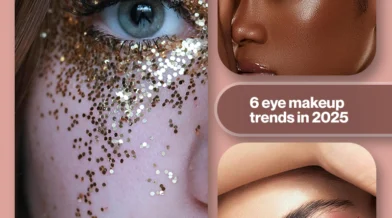As consumers increasingly blend their digital and physical worlds, brands are tasked with meeting them in this hybrid space.
One industry leading the way in this integration is the beauty sector, with virtual makeup apps at the forefront of this innovation.
So, if you’ve been contemplating the power and potential of this tool for your brand, here’s what to consider and how to get started.
The rising significance of a virtual makeup app
With the global AR market valued at $40.12 billion in 2022, and predicted to reach a staggering $1,188.98 billion by 2032, the beauty industry is strategically positioned to harness a significant portion of this growth.
And virtual makeup apps are becoming non-negotiable in this process for beauty brands.
So, before diving into the nitty-gritty of app development, let’s first understand why a virtual makeup try-on app is essential.
✧ Digital experience
Today’s consumer lives and breathes online. Specifically, Gen Z, which are setting the pace for online consumer behavior, clock in approximately 10.6 hours a day online. Moreover, they spend 5.9 hours a day on their phones. Their expectations have evolved beyond mere online shopping; they seek an enriched, immersive digital experience.
93% of Gen Z also want to use AR for shopping, with 88% of them wanting to use AR for makeup try-ons.
Virtual makeup apps fit this bill perfectly by allowing them to see how a product would look on them before purchase, thus bridging the gap between digital visualization and real-world application.
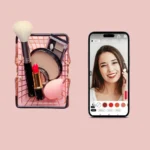
Find out how to bridge that gap between online and offline beauty experiences and discover invaluable benefits of phygital beauty in this article.
✧ Reduced returns
Financially, the return on investment for virtual makeup apps becomes evident when examining product returns. According to Narvar’s report, in 2020, shoppers returned $428 billion worth of purchases. And the number one driver of these returns was the wrong fit, size, or color – a testament to the challenges of buying beauty products without physical trials.
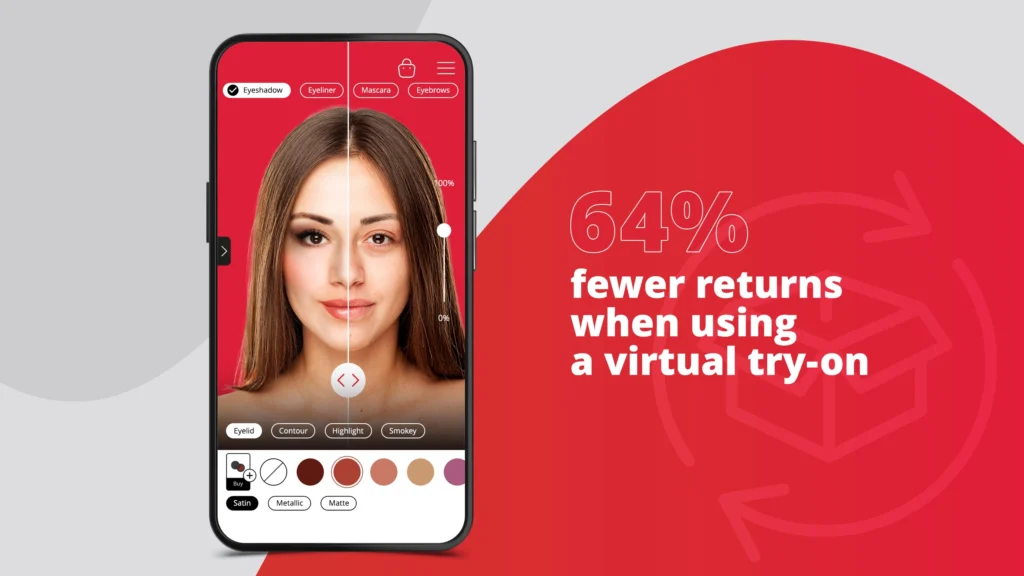
Enter virtual try-ons. By offering users an AR-fueled experience that mirrors physical product testing, brands can drastically reduce return rates. This not only saves logistical costs but also enhances brand trust as consumers feel more confident in their online purchases.
✧ Engaging user experience
In the highly competitive beauty market, brand loyalty is gold. To this end, virtual makeup apps can be a game-changer. And the beauty market research data underscores this. For brands integrating virtual try-on tools, data shows whopping surges of up to 200% in sales and over 100% in website traffic.
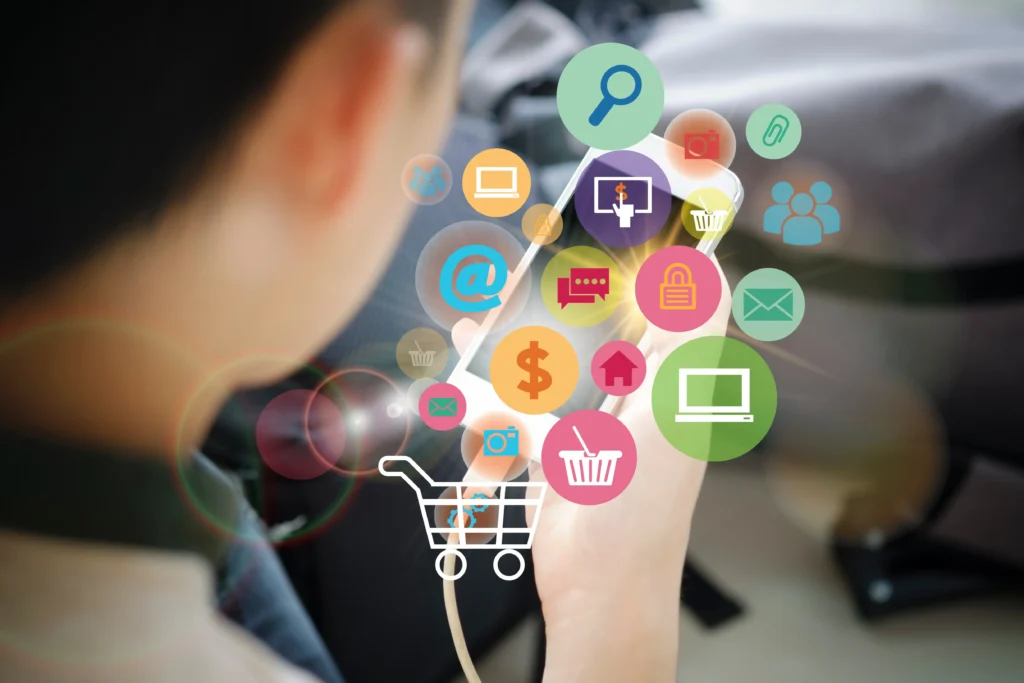
The ripple effect? Increased user retention, deeper brand loyalty, and a direct uptick in sales conversions. In essence, these apps aren’t just enhancing user experience; they are driving bottom-line results.
Beauty app development: Main steps
Navigating the world of beauty app development may seem daunting, but by breaking down the process into manageable steps, it becomes a clear and organized journey.
As the digital realm continues to shape the beauty industry, understanding these foundational steps is crucial for brands aiming to excel. So, some of the main steps of developing a virtual makeup try-on app include:
- Setting clear objectives
- Choosing the right technology
- Resource allocation and cost management
- Customization and personalization
- Integration of analytics
Now, let’s dive deeper into each step.
1. Setting clear objectives
Every successful app starts with a clear objective. Much like a compass for a ship, these objectives guide the direction, development, and ultimate success of the app.

So, it would be good to ask yourself a few crucial questions:
- What do I want the user to experience? – Do you want them to feel empowered, educated, or purely entertained? By pinpointing this, you can tailor the app’s features, design, and content to resonate most effectively with your target audience.
- Do I want to focus only on makeup, or incorporate shade finder, face shapes, and personalized looks as well? – Determining the app’s focus is essential. Will your app be a one-stop solution covering all color cosmetic realms, or will it specialize in a particular niche like lipstick? The scope will influence the app’s design, features, and marketing strategy. Moreover, it can help position your brand more distinctly in a crowded market.
- Is my primary goal user engagement, sales conversion, testing new product lines, or brand awareness? – Is your app primarily a sales tool, aimed at driving product sales? Or is it more about brand building, providing valuable content, and fostering community? Maybe it’s designed as an engagement tool, filled with interactive features to keep users returning. Recognizing the primary goal will provide a clearer framework for decision-making throughout the app’s development and lifecycle.
2. Choosing the right technology: The key to success in beauty app development
Selecting the appropriate technology for your virtual makeup try-on app is a pivotal decision. It can basically make or break your app’s performance, user satisfaction, and overall brand impact.
The right technology can elevate user experience to unparalleled heights, and with proper testing, you can cover consumers’ unrevealed needs better.
- Real-time AR integration: Think about how nowadays everyone hates waiting, especially when we’re trying out new looks online. Any delay or freeze can make the experience feel off. That’s why a top-notch beauty app should let users try on makeup instantly, just like when they’re in a store. And it’s here that Arbelle shines and leads the way in the beauty industry. Our beauty AR is powered by FaceTrack, a cutting-edge face-tracking technology used by over 300 top brands worldwide. And with it, Arbelle promises quick and spot-on makeup trials in real-time using standard cameras.
- Hyper-realistic makeup simulations: The authenticity of a virtual try-on is judged by its realism. An app must effectively replicate the exact shade, color, and unique characteristics of a product. This includes details like matte, glossy, or shimmer finishes. Arbelle, for instance, offers such lifelike finishes and realistic colors, ensuring that what users see virtually is just like what they’ll get in hand. The superior AI-driven technology behind Arbelle ensures there’s no room for discrepancies. Therefore, users can trust that their online picks will look just as good in real life.
- Precise and stable makeup rendering: When your customers apply virtual makeup, e.g., a foundation mask, you want that foundation to cover their exact face shape, without any unnatural lines or parts of the face that aren’t covered. In addition, the applied makeup shouldn’t “move” from the face, i.e., there should be extremely little to no movement (jitter) detected by the eye.
Check out the realism and precision of Arbelle:
- Scalability and responsiveness: With more and more people using mobile apps every, it’s key that your app can handle lots of users without slowing down. Your chosen tech must be resilient, ensuring the app remains fluid and responsive, no matter the number of users.
- Customization and support: The beauty industry thrives on individuality and brand distinctiveness. So, it’s vital that your app is customizable – from its AR makeup features to its user interface. But it’s not just about the app. Beyond technicalities, brands should seek technology providers who are partners in the truest sense. This means offering not just tools, but solutions tailored to individual brand needs. Arbelle excels in this arena. Along with our superior technology, we also bring to the table an experienced team ready to create tailor-made solutions aligning with your specific business requirements.
3. Resource allocation and cost management
When we think about launching a top-tier virtual makeup app, it’s not just about having an idea. Bringing that vision to life requires a blend of the right resources, expertise, and a strategic investment.
Of course, you can develop a virtual makeup app in-house, as well. But this usually entails increased costs and time-to-market, among other things. Working with experts is a simpler and usually less costly way to go.
And here’s a more detailed look into what it involves:
| Technical expertise: Partnering with developers and engineers specialized in AR development ensures that your app doesn’t just function, but thrills. They’ll have the know-how to tackle challenges, optimize performance, and deliver a user experience that feels magical and intuitive. |
| Creative input: While the tech side of things is crucial, the soul of a beauty app lies in its authenticity. This is where the world of beauty and tech intersect. Collaborating with professionals from the beauty world, like makeup artists or industry veterans, can make a significant difference. They bring in-depth knowledge about shades, textures, trends, and user preferences. |
| Costs: Investing in creating a high-quality app includes paying for skilled developers, purchasing licenses for specific technologies, testing, marketing, and more. But think of this as planting a seed for future gains. The initial costs can seem daunting, but it’s an investment that can pay off big time. Brands that have integrated virtual try-on features in their apps have reported a whopping 200% increase in sales conversions. This means that for every dollar spent, the return is significant, not just in terms of sales but also brand loyalty and recognition. |
4. Customization and personalization
In a world that’s increasingly digital, modern consumers aren’t just looking for products; they’re seeking experiences that are uniquely tailored to them. When it comes to beauty apps, this means creating a platform that resonates with individual needs, preferences, and identities.
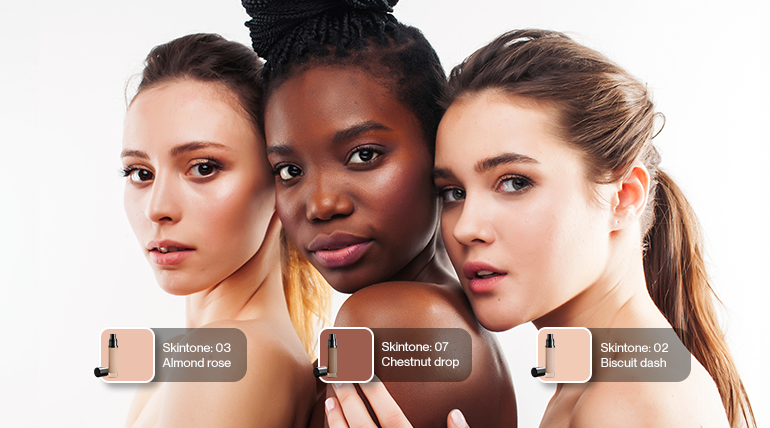
Here’s a closer look at why customization and personalization are paramount:
- Skin tone matching: Certain skin tones, such as the darker ones, have traditionally been underrepresented in the beauty industry. Therefore, it’s more important than ever to cater to diverse skin tones and types. So, by integrating skin tone matching solutions such as Arbelle, which is inclusive and covers a full spectrum of skin tones, brands send a clear message: Every user matters, and beauty is for everyone. This feature ensures that users can find and try products that complement their unique complexion, fostering inclusivity and broadening the brand’s appeal.
- Product recommendations: Ever walked into a store and wished you had a personal stylist to guide you? That’s the kind of experience AI-powered product recommendations can provide. By analyzing a user’s profile, browsing habits, and product preferences, these smart systems can suggest items that are more likely to resonate with the individual. But this isn’t just about enhancing the user experience; it’s also a business booster. A McKinsey & Company study reported that when provided with personalized recommendations, 76% of consumers are more likely to make a purchase. It’s a win-win!
5. Integration of analytics
We can say that analytics are the heartbeat of continuous improvement. So, to guide your brand’s evolution, it’s important to incorporate robust analytics into your virtual makeup app.
We can say that analytics are the heartbeat of continuous improvement. So, to guide your brand’s evolution, it’s important to incorporate robust analytics into your virtual makeup app.
- Track user journeys to understand engagement points and potential drop-offs. Are users leaving before trying on products? Is the checkout process too cumbersome? Answers to these questions can guide app enhancements, ensuring a seamless and delightful user experience.
- By monitoring the popularity of different items in the virtual try-on experience, you can derive actionable insights for your inventory management. If a particular shade of lipstick is consistently favored in virtual trials, it might be wise to stock up on it. Conversely, less popular items might benefit from promotions or rebranding.
- Analytics doesn’t stop at user interactions. It can delve deeper, offering insights into who your users are and when they’re most active. By understanding peak usage times, brands can optimize marketing campaigns or roll out special offers. Demographic data, such as age, location, or gender, can be invaluable in crafting targeted marketing strategies. And with Arbelle and face analysis technology, that’s exactly the type of data that you can collect and analyze.

Let’s start your virtual makeup app journey
In the digital age, brands that understand the synergy of beauty and technology will carve a niche for themselves.
As mobile apps shape consumer behavior in 2023, ensuring that your beauty brand remains innovative with tools like a compelling virtual makeup app will be paramount.
And Arbelle is your partner on this journey, combining state-of-the-art technology with an understanding of the ever-evolving beauty industry. Don’t hesitate to get in touch with us to find out more!
Get started with your app today
Tell us about your specific project and business needs and we’ll help you create a personalized, realistic virtual makeup try-on app.
